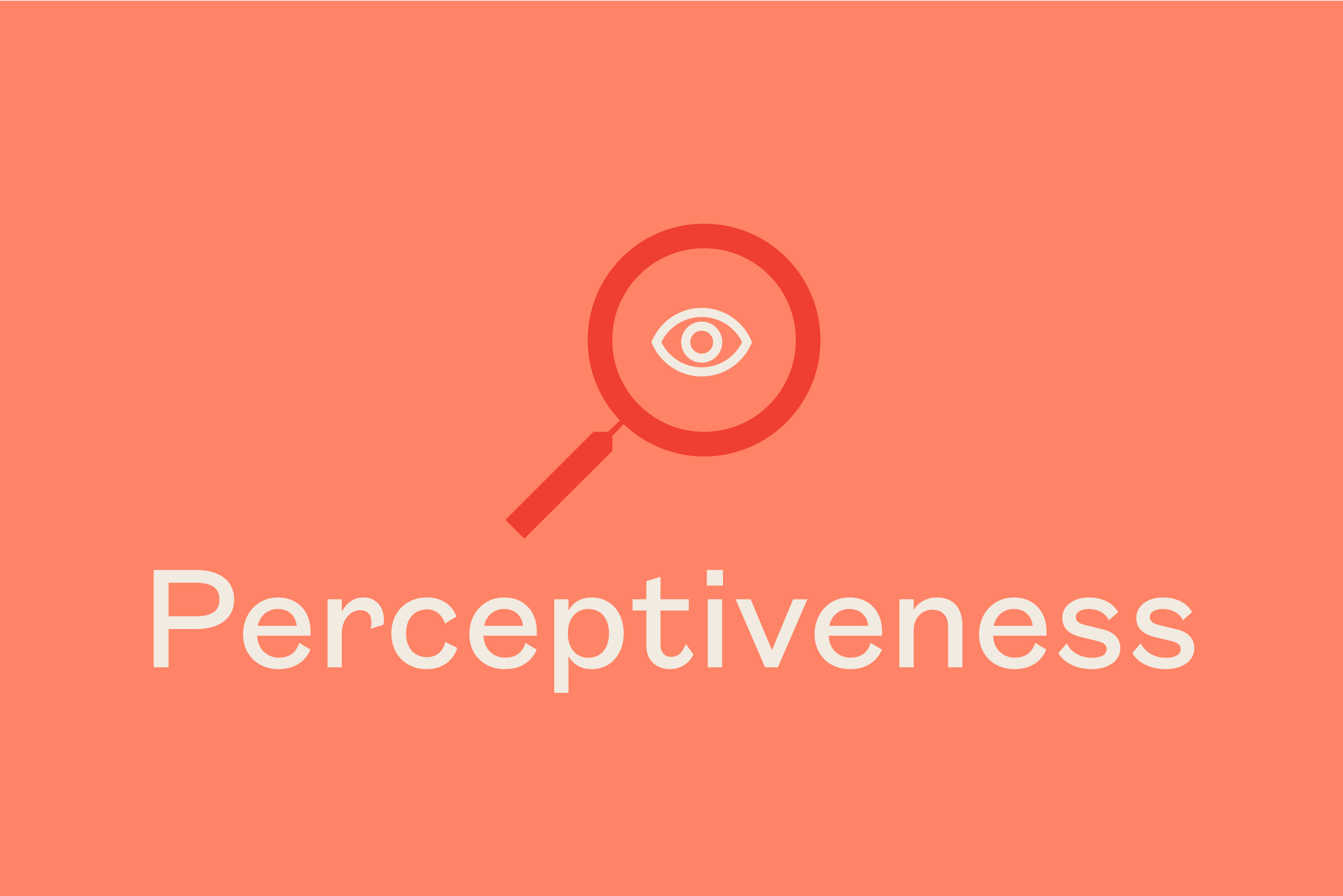“Just wanted to check-in – are you doing okay?” a former manager asked me during a Zoom conversation last year, during the height of the pandemic. “It seemed like you were a little upset in that last meeting.”
As someone with a penchant for masking negative feelings in professional settings – a consequence of a highly agreeable personality – her question shocked me. How, I wondered, had she seen through my facade of implacable calm and cheeriness? Her question punctured my emotional armor. It also prompted an authentic conversation that made me feel supported – and newly energized – during a challenging moment.
This colleague embodied one of the most elusive leadership traits out there – perceptiveness. Perceptive leaders are aware of the thoughts and feelings of those around them, and react in a helpful way when colleagues are uncomfortable, stressed or overwhelmed. But perceptiveness is slippery both because research suggests we tend to think we’re more perceptive than we actually are (which means we may not work at it as much as we could), and because the higher we climb up the ranks of leadership, the more likely our powers of perception are to wane. In other words, there can be a gap between how perceptive we think we are, and what others actually see – a safety hazard for anyone who wants to be an effective leader.
We spotted this perceptiveness gap during a recent analysis of our data at Torch (thanks to Lorien Elleman, PhD, one of Torch’s behavioral scientists). Many users start their coaching engagement by taking a 360 assessment – a statistically validated tool that leverages the most recent and relevant psychological science to establish a baseline of someone’s leadership strengths, challenges, hidden opportunities, and hidden strengths. The assessment asks questions connected to three key domains of leadership ( personal, interpersonal, and team) and nine subdomains – including traits like receptiveness, perceptiveness, authenticity and balance. Because users must ask at least three colleagues to fill out assessments for them, too, we’re able to see the gaps between someone’s own analysis of their competencies. When someone underestimates their own abilities compared with their colleagues, this might show up as a hidden strength. On the other hand, if they overestimate their capacity, this would show up as a hidden opportunity.
The most common leadership awareness gap we found in a sample of 1,200 + participants across demographic groups in the Torch network? Perceptiveness.
Though this discovery was troubling, it wasn’t surprising. Part of perceptiveness, after all, involves self-awareness – which entails everything from being able to see yourself clearly, to knowing how others see you, and to understanding how your behaviors impact the people around you. Unfortunately, according to research from the organizational psychologist Tasha Eurich, most of us aren’t as self-aware as we think we are. In fact, her research suggests that only about 10-15 percent of us are truly “self-awareness unicorns.” The rest of us are stuck in a kind of delusional purgatory.
There is both good news, and bad news about getting out of this purgatory. The good news is that perceptiveness is not a fixed trait. The bad news is that perceptiveness is not a fixed trait.
Let me explain what I mean. Perceptiveness is not simply a skill that you have, or you don’t. Rather, it’s a skill that you can develop and strengthen over time, which is crucial – especially if you’re a leader, or you’re hoping to become one. Researchers like Stanford Psychology Professor Dascher Keltner have found that as individuals gain more power and influence, their capacity to empathize and take the perspective of other can atrophy. It’s what he calls the Power Paradox: “What people want from leaders—social intelligence—is what is damaged by the experience of power,” he writes.
Let’s go back to the good news: that perceptiveness isn’t a fixed trait, but rather a muscle you can develop over time with the right routine. And on this point, our Torch data suggests some more good news: After assessing two different sets of 360 feedback ( we deliver the assessment twice, about six months apart, to help users see their own growth), most users saw their own understanding of their perceptiveness come more in line with how others saw it. On average the alignment between a user’s and colleagues’ 360 scores increased 52 percent, in terms of variance explained, a common scientific metric that indicates the degree of similarity between two sets of scores. In other words, users became substantially more self-aware with the help of coaching and 360 degree feedback.
Recently, I’ve started to suspect that I, too, am not as perceptive as I think I am, especially after I considered how I would respond to the Torch statements designed to measure perceptiveness. They include things like: I notice when a colleague is upset, even if they don’t say anything. I am quick to spot when a colleague in a group is feeling awkward or uncomfortable.
Am I? I’m not so sure.
But I do know another tool that can help me measure my perceptiveness in real-time: asking questions and listening to the answers – the tactic my former manager used with me. Because the truth is that though we humans are skilled at something called theory of mind – imagining what someone else might be thinking or feeling – this “sixth sense” has its limits, according to the research of University of Chicago Professor Nicholas Epley. Instead of assuming we know what others might be feeling, and what they might need in the moment, a truly perceptive person knows that one of the most profound ways to address discomfort is simply to ask, listen and learn.
“Others’ minds will never be an open book,” Epley writes in his book, Mindwise. “The secret to understanding each other better seems to come not through an increased ability to read body language or improved perspective taking but, rather, through the hard relational work of putting people in a position where they can tell you their minds openly and honestly.”
Want to learn more about how to become a more perceptive leader? Watch our on-demand recording of our Lead By the Book conversation series where we chat with Kim Scott, the bestselling author of Radical Candor and Just Work, to explore the connection between perceptiveness and creating just, inclusive workplaces where all people can thrive.


